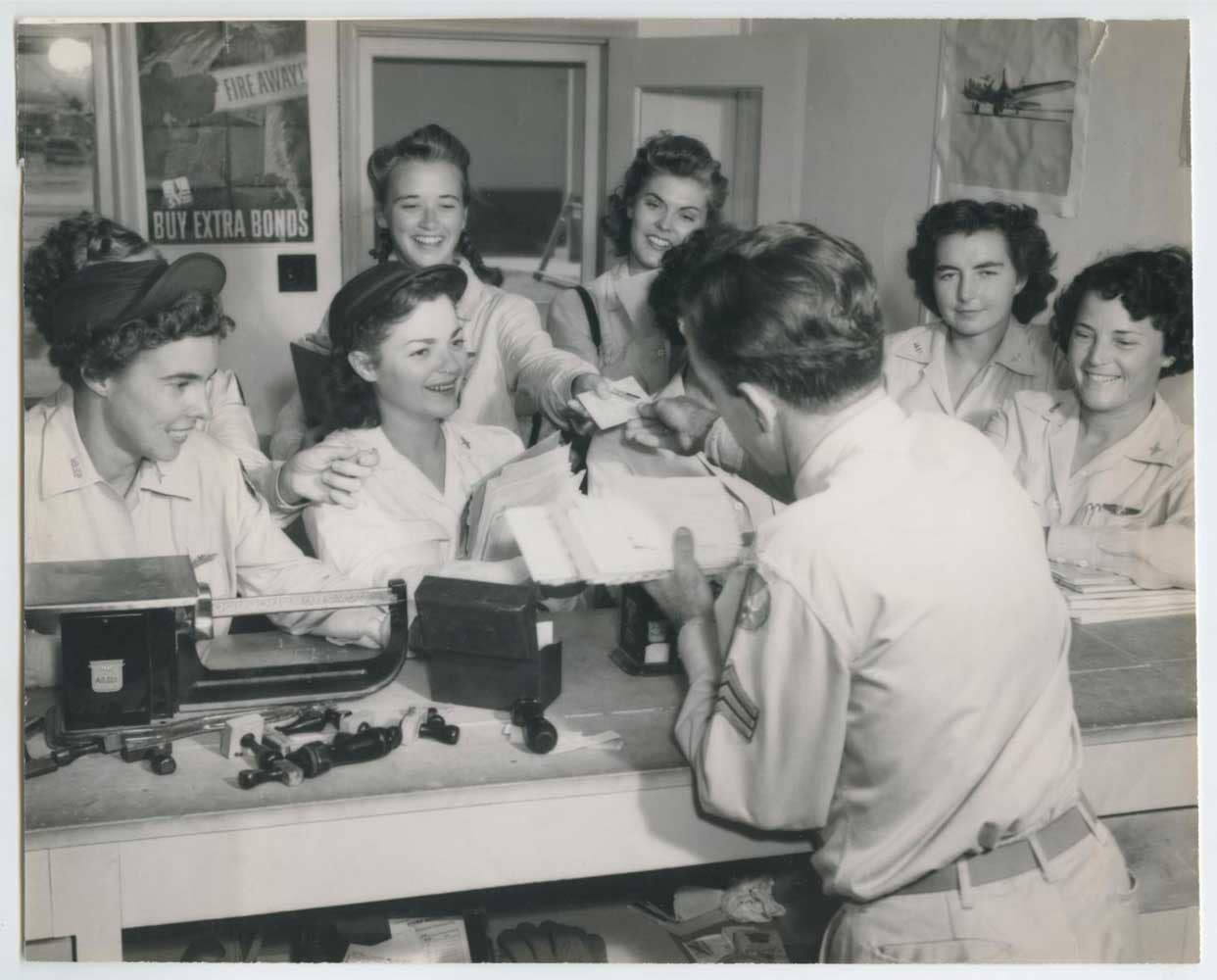April 17, 2001
“Dear Duffy,
Thanks to all the new technology and Julia Blum we made this contact after so many years. You were my instructor in basic training. You were very particular about making three-point landings at the very end of the runway. Your good training saved me and a P-51. I had a locked wheel and the friction when I put the wheel down caused a fire. In Long Beach they cleared the field and I landed on all three points at the end of the runway. Did then run off the runway a bit. Received a commendation for saving the airplane. When all these years you were the one that saved this plane.
Believe I have a picture of you in a BT. When I have more time will hunt for it and see that you get a copy. I thought at the time you were so handsome and I was lucky to have you for an instructor. Some of the gals had some difficult instructors.
I now live in Huntington Beach, have been married for forty-six years, had one daughter and now have three grandchildren, two girls and one boy. The girls aren’t interested in flying, but I do believe the boy six has all the makings of a pilot. Loves to go fast in his little car and bicycle, swings as high as the swing will allow. Hope to hear from you soon. – Violet Thurn to you.”
Francis (Frank) Duffy served as a flight instructor at Houston and Avenger Field in Sweetwater, Texas.
Born in the section of New York City called ‘Hell’s Kitchen’, his family moved to the South Shore of Long Island when he was two years old. After graduating high school in 1937, Frank was offered a partial scholarship at NYU where he majored in geology with a specialty in petrology.
Prior to his career in aviation, Frank caddied during the depression at the Salisbury Country Club, located in Westbury, Long Island. The facility was straight across from Mitchel Field, which was a USAAF base adjacent to Roosevelt Field. While Frank caddied, Marine reservist, Major Alford Williams flew his Grumman Gulfhawk every Sunday afternoon over the golf course. Frank would watch Williams fly overhead, and this piqued his interest and determined him to become a pilot.

After two years, Frank left NYU to enlist in the U.S. Navy as a naval aviator. Since Navy flying was predicated on carrier landings, the object of the carrier was to get the planes on deck as fast as possible. As a result, Frank learned a circular and a long, straight approach so that if you were two miles out from a carrier you could fly in the outlying fields in order to get two or three airplanes on the deck while still coming in to land.
After his honorable discharge from the Navy, and with his experience as a Navy pilot, Frank contacted Captain Max Balfour at the Spartan School of Aeronautics in Tulsa, Oklahoma, where he later received his commercial license. In June 1942, at the recommendation of Capt. Balfour, Frank had a flight check with the British RAF in a PT-17 and was hired as a flight instructor by the Plosser-Prince Air Academy in Sweetwater, Texas. He trained British cadets there for two months until August, when the U.S. Government closed the private school and took it over as a

USAAF military installation. He spent the next eight months there training USAAF cadets in Primary. During that time period, women pilot trainees assigned to Avenger Field moved in while there were still male cadets at the airfield.
In April of 1943, Frank spent his first two weeks as a flight instructor for the Women’s Flying Training Detachment (WFTD) at Houston Municipal Airport, instructing a cadre of six women from Class 43-W-4 before the program was moved to Avenger Field in Sweetwater. At Avenger Field the women continued their training with Frank as their Basic instructor on the BT-15. Violet ‘Vi’ Thurn was of them.
Frank had a wonderful rapport with his students and was, in fact, a favorite. He recalled a time when he was sick for a few days, and a weekend where two of the trainees in his group came to check on him at his home, saying, “We wanted to make sure that you came back!…… Which, of course, he did.
From June to August 1943, Frank taught Advanced on the AT-6 and AT-17 in Sweetwater and flew five different airplanes while there. After fulfilling his contract as an instructor with Aviation Enterprises, Frank Duffy went on to become a career pilot with Pan American Airlines, initially based in Brownsville, Texas. After 36 years and nearly 30,000 hours of logged flight time, he retired on the day of his 60th birthday in 1979.
Well into his 87 years, Frank fondly remembered his WFTD students at Avenger and the days that he had proudly served as a WASP instructor. And the letter that he received from Vi, fifty-three years later, was the icing on the cake.

Written by: Julia Lauria-Blum
Photos courtesy of: Julia Lauria-Blum
About Julia Lauria-Blum:
Julia Lauria-Blum earned a degree in the Visual Arts at SUNY New Paltz. An early interest in women aviation pioneers led her to research the Women Airforce Service Pilots of WWII. In 2001 she curated the permanent WASP exhibit at the American Airpower Museum (AAM) in Farmingdale, NY, and later curated ‘Women Who Brought the War Home, Women War Correspondents, WWII’ at the AAM. She is the former curatorial assistant & collections registrar at the Cradle of Aviation Museum on Long Island and is currently editor-in-chief for Metropolitan Airport News.
Julia is the proud mother of two daughters and a rescued Boxer. Her many interests include swimming, painting, traveling, aviation history, cooking, and storytelling.


